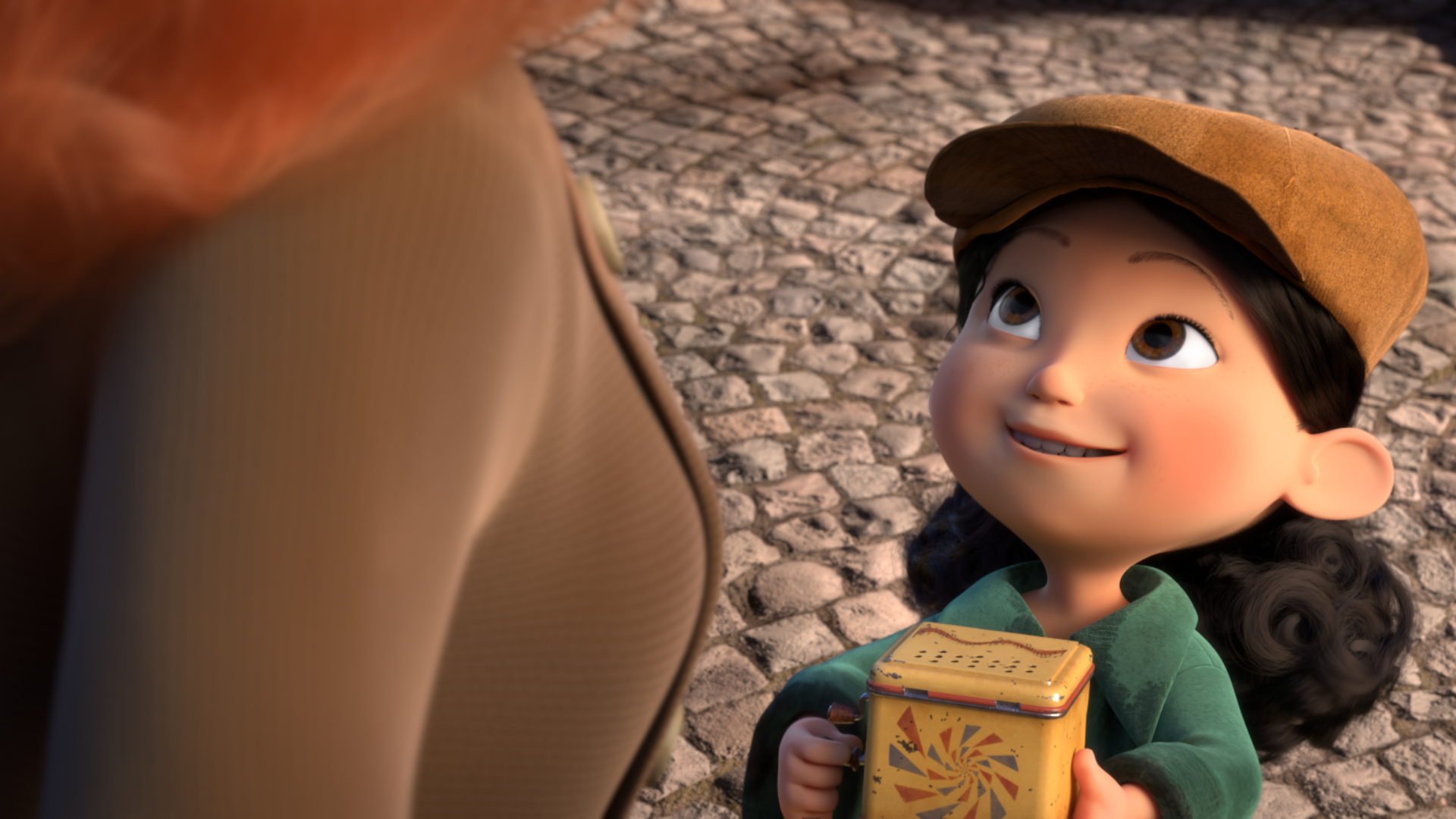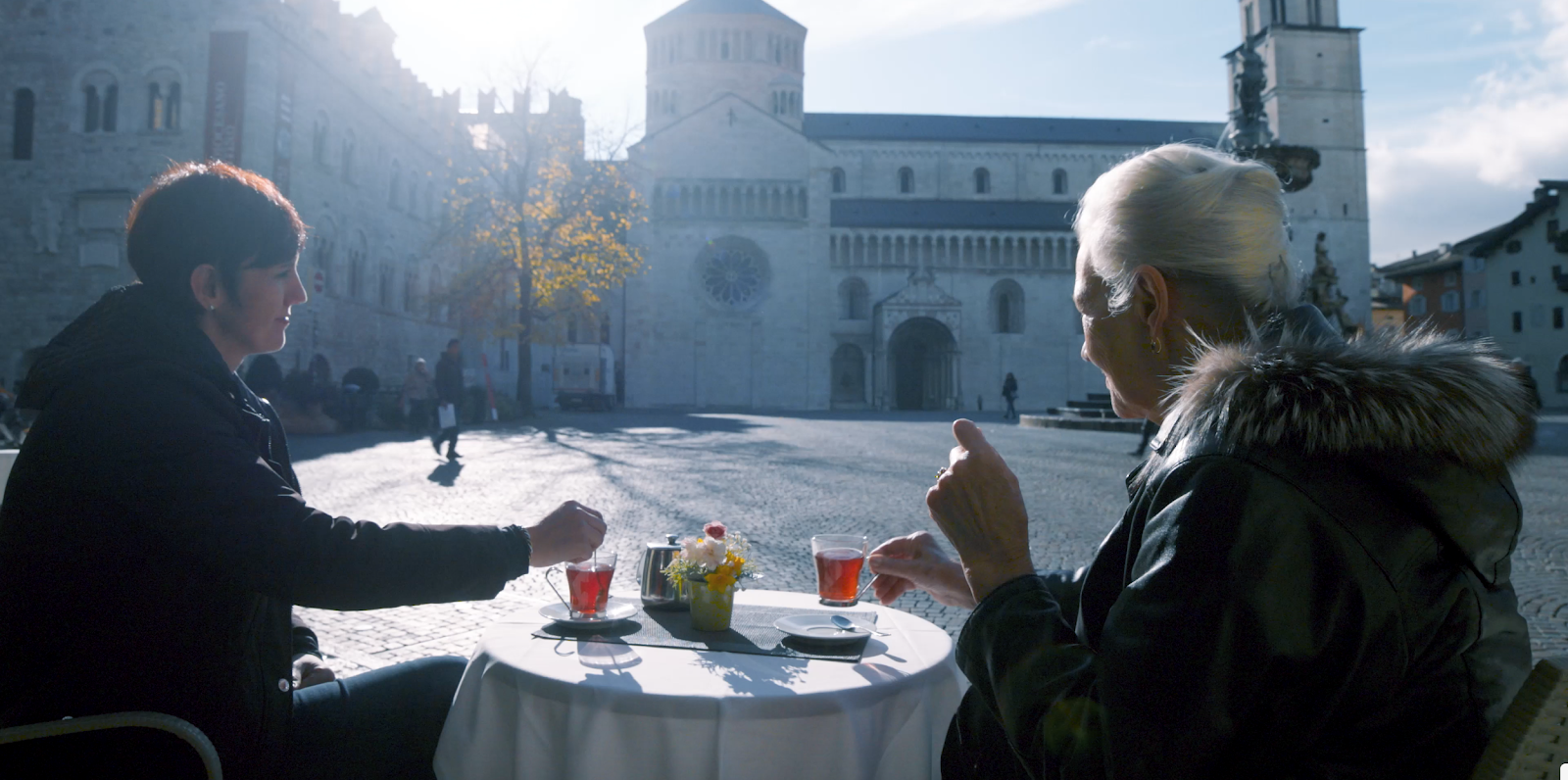
When Cinesite was first approached by director Cinzia Angelini to help complete her animated short Mila, the film was already well on its way, having had over 350 volunteers in over 35 countries over the better part of the last decade contributing to it. All it needed was the final push to get it past the finish line.
In part one of our two part case study of Cinesite’s work on Mila, Director Cinzia Angelini, tells us the film’s origin story and describes its unique production journey.
Here is Cinzia in her own words.
The Story of Mila
Mila is an animated short inspired by true WWII stories that my mom told me as I was growing up. One story in particular really stuck with me as a kid. It wasn’t about any one specific event, as much as it was a recurring feeling she had as a child, while bombers attacked her city. At the time, as the planes approached and air raid sirens sounded, she froze where she was. She could not think, move, or breathe until an adult swept her up and brought her to shelter.
This emotion that my mother often described so vividly, always made me wonder about the impact that war has on kids. What’s going on in their heads? What are they feeling? What are their fears? What are the consequences of this trauma they live through, and how does it affect the child’s personal development and subsequent life? These questions eventually became the starting point for the film that I knew I had to make.
Of course I couldn’t just show a passive child waiting for someone to pick her up. A character needs to be proactive, and either change within the story or change people around her in order to be interesting. I used the emotion that my mom experienced in the War, and built a story around that, using her childhood setting – the Trento, Italy, of 1943.
A Crucial Message
One doesn’t have to be directly affected by war to understand the core of the message behind Mila. Mila, as a character, represents the best of humanity. She goes through hell, but still has the strength to move on, to help people, and let people help her. Mila is a child that loses everything — her family, her house, her peace, her balance. Yet throughout the film, we see she still clings to hope and is able to inspire it in others. I wanted to show the strength and resilience that kids can have, even when they’re alone, abandoned and lost. Mila represents all children, in any war, at any time. It seemed natural then to turn to the universal language of music to convey the mood. The music not only brings emotion to the film, but also underscores its philosophy. This film is about more than just this little girl. It’s about the indomitable human spirit that manages to transcend almost any tragedy, or circumstance, even in the face of the hopelessness and improvidence of war.

The Plot
The setting of the film is Trento, Italy. It’s a beautiful city we partially built in 3D, both with and without a war look, to support sequences that alternate moments of raw reality, with moments of idyllic memories and dreams. The sequences contrast between the darkness of war and the translucent light of dreams. This allows the film to convey the emotions within the story without the use of any dialogue.
Thanks to a young woman who comes to her rescue, Mila survives a devastating bombardment and takes cover in the woman’s house, where at night, during a candle lit sequence, she finds comfort in a rocking chair and broom turned carousel horse along with a music box. As the woman mends what she can of Mila’s hat, the bond between them is formed. The woman and girl survive the night, and emerge the next day to witness the beginning of the end of the War. Even as they both lose everything and have to leave their beloved city, they find salvation in each other and their new life together.

A Unique Production Journey
Mila certainly is a unique production. When I started about ten years ago, I didn’t have a production company, a studio that wanted to do it, or even a budget to speak of. I only had a vision, a dream and thankfully, a great group of colleagues and friends who encouraged me to embrace it. I owe them so much, as they came on board with a selfless desire to help me bring Mila to a large audience. This gave me the strength to keep going, and never give up. That same sentiment became a pillar of this production, which now totals more than 350 artists who volunteered their time and talent from 35 countries. Producer Andrea Emmes, VFX Supervisor and owner of Pixel Cartoon, Valerio Oss, and Executive Producer Valentina Martelli at Ibiscus Media, were among the first to join. They supported me and the team in ways I could never have anticipated.
Mila came to life because hundreds of artists and an incredible group of sponsors embraced the film with passion. Sometimes when a large group of people have a common goal, and build momentum, the unexpected can happen. Mila’s message involves a character that everyone can fall in love with, and a story that inspires everyone who hears it. The strong, socially relevant message, the mix of realism, dreams, and the magical music by composer Flavio Gargano, captivated people of all ages. This led to the team growing quickly in size, and the story of Mila to generate incredible buzz, before the film was even completed. Through all this I learned that if you have a project with a meaningful message, a message that is profoundly personal to the filmmaker, and socially relevant, people will follow you. People want to be a part of something that matters. People want to have an impact, and make a difference.

A Remarkable Partnership
When I started the project in 2010, I never would have imagined that I was embarking on an adventure that would allow me to work remotely with hundreds of artists volunteering from every corner of the world. (Did I mention how grateful I am for the Internet?) At the time, our innovation of this “virtual studio” created an incredible energy, and the Mila production got the attention of many in the entertainment industry long before the film was completed. Dave Rosenbaum, Cinesite’s Chief Creative Officer, (and Mila fan for many years) introduced the film to the studio. Head of Production Tamara Boutcher, Executive Producer Warren Franklin, and General Manager at Cinesite Vancouver, Tara Kemes, all welcomed the project and were key in officially bringing it to Cinesite.
While the volunteer approach allowed the film to rise to an incredibly high level of quality, we needed that “big push” to finish, and still maintain the vision I had for the film. I have no words to express the immense gratitude we all have for the fantastic team at Cinesite, and in particular, for the artists at the Vancouver studio. They all came on board with the same enthusiasm that every “veteran volunteer” had. Over the years, I pitched Mila to many big studios, most of the big players. In the end, it took a Big Studio with a HUGE heart, like Cinesite, to make this happen.
For an independent project like Mila to be picked up by a major powerhouse in the industry is a milestone. I believe we’ve all played a part in making a real difference in the industry. Cinesite will be the first major studio to embrace an independent film that deals with this kind of topic. And the film will set a prime example of how independent artists and a mainstream studio can unite behind a powerful, socially relevant project, and get it done.
Legacy
My hope is that people, and especially kids, walk away from the film thinking that, ok, life can be hard, be extremely challenging and feel beyond our control. But, we can choose to do something, to make a difference. We can be empowered, not just victimized. That’s what I learned from my mother’s war stories. That’s the message I felt was important to share, using the medium I love most, animation.

